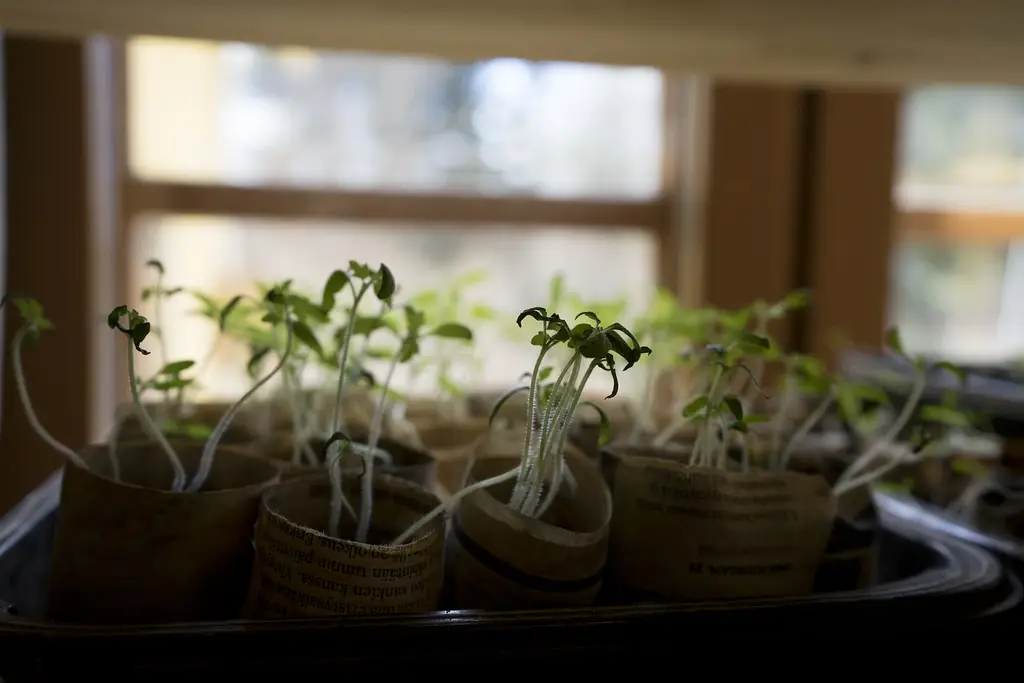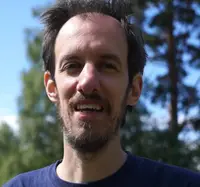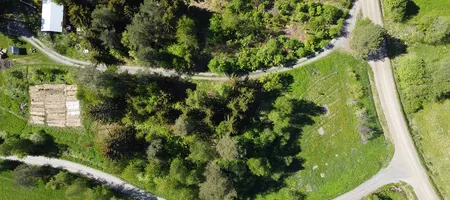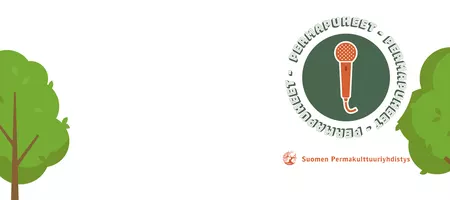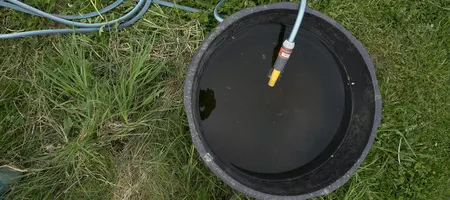The used process for this design is Obr3dim, an Obredim variant. Use the jump menu to dive into the different steps.
---------
Observe
Boundaries
Resources
Design
Evaluate
---------
Observe
You know BeyondBuckthorns.com, don't you? You are currently on it, so I guess you somehow do. But do you know what it is about? If not, now is your time to go there and check it out. You might be here more often while following my Diploma in Applied Permaculture Design while I'm working on it.
Let me introduce myself, or actually let me introduce my profession. I'm a web designer, more exact, I'm a front end designer for Drupal CMS related websites. Even more exactly I'm a UI and UX designer. But I'm also a website architect and a suite builder. And I'm also a entrepreneur. Take your time to understand where I'm coming from. Basically I have extensive knowledge in how to set up websites, how to handle data, etc. In the eyes of a muggle I'm a magician. So, instead of writing as something old fashioned as a book I created BeyondBuckthorns.com. A diary of a journey into Permaculture in rural Finland.
The structure on this website is at the moment pretty simple. It has four forms, so called node forms, to create articles. Within that node form there is the possibility of tagging. Tagging is a process of creating a horizontal link structure. Oh, I guess I lost you there already. But its fine, you don't need to understand all the details. The horizontal structure brings contents with the same tags (taxonomy term) into order, it connects them. Let's say I create a tag called "Continuous Integration" within a node called "Continuous Integration. (Which you are currently reading). Then later I write an article called "Continuous Integration - Part 2" which I tag also with "Continuous Integration", then I would have two articles connected with that taxonomy term and those two articles will be visible in a list, and every further article with the same tag will be shown in that list.
I haven't counted all the tags in the system but there are many. There is a tags for berries, for food, for biogas, Zone 0, for Infinitium, for Beyond Buckthorns, etc. Everything that we thought of that could have more than one article has a tag, even multiple tags. Tags can work together, for example the berries+cooking might result in a recipe for jam (at the moment it doesn't). The combinations of tags are basically unlimited but for usability reasons I suggest not to use more than 3 combinations (actually you can't at the moment). Another example might be NDAPD+Zone0 and you might find all articles that relate to my Diploma in Applied Permaculture Design and Zone 0. To give you one last example LDAPD + Greenhouse will list all articles from Lumias Diploma in Applied Permaculture Design and the designs about the Greenhouse (or whatever design she is up to).
Sectors
But before we actually start using tags, or thinking about tags, we need to think about our Sectors and Zones. Sector analysis shows us what is moving through our site. Hence on a website things that move through our website are our visitors. There are two categories of visitors: real persons & bots. The first one can be narrowed further down. We could ask the question:
- where did they come from?
- where did they go?
- where did they leave?
- how long did they stay?
- what Operating System did they use?
- what browser did they use?
- what was their screen resolution?
We could do the same with the bots:
- what bots are coming to our site?
- what do they do with our content?
- are they behaving friendly?
And based on all that data that we could or even should gather, we can decide things. But, in order to do that you need the data. At Beyondbuckthorns we opted for Matomo analytics. It is an Opensource tool that is in compliance with GDPR. All visitor data is anonymized and hosted by ourselves. Means that no visitor data is ever shared with 3rd parties. Everything stays between you and us. It is like someone we invited to come around to visit our premises. We trust them to not break things.
The same can be done with the concept of Zones. Zones mean the relative placement of objects on a given territory, a defined space. In my case the territory is the website and we have several different objects in many different locations. We have the header. The header comes with the logo that links back to the frontpage (in case someone gets lost) the main menu and the search. There is also a big header image. A visual entry point, like a sign when you enter a Permaculture farm. This header image also hosts the headline. The header is the entry point onto the site. It is the first object visible to nearly every visitor. It is like entering a Permaculture site and immediately know where the important points on the site are. It is the map at the entrance and it is also the good guide that tells you a little more.
Below the header it depends on where we are on the site. From the main menu we could currently enter the blog and find a chronological sorted list of the content, or we can jump right into tags that we thought to be important, for example gardening and energy. Or it could even be content, like for example the "About" page. This section of the page also houses a sidebar that gives some info about the author, access to the archive, a jump menu, and some random images.
In the lower part of the site there is the footer. The footer contains links to Social Media accounts. The footer stays the same across all pages, across all content. The visitor can at any time get in contact with Beyond Buckthorns.
Zones
But let's get back into Zones. Let's do Zone from a content perspective.
- Zone O is something you guys will never see. It is the heart of the content administration.
- Zone 1 is the actual content or the actual content where things happen. Where comments get posted, where answers are given, basically interaction. I need to be there pretty often. That's why I have a short link for comments in my administration menu and that's why comments get sent to me by mail. Zone 1 also houses the Social Media. Because there I need to be pretty often as well. Interaction costs a lot of time...
- Zone 2 is even further away: landing pages, tags that got extended with descriptions and images. The Diploma tag is a landing page. It houses more info than a standard tag page. Basically tags that are more in focus than others. Perhaps in 3 years the tag in focus is "Permaculture Courses"
- Zone 3 is further away: the tags. I need to be there from time to time to check for coherence. For example if tags are still valid, or if we need to change structure. Means for example that we have written a lot about red currant and white currant and then decide that actually everything is currant and that we need to bring the other two tags in the right hierarchy below currant. Later we decide to call all currants Grossulariaceae and then we need to change the structure again.
- Zone 4 is pretty far away, for example the "About" page. It changes every now and then. One change is coming: I'm going to write that I'm with the Diploma of Applied Permaculture Design. But besides that? Probably no change within one year.
- And then we have Zone 5, content that I'm totally unaware of. Something in the mists of the system, years old but still valid. Something that gives information back to me while reading. It teaches me lessons. And there are the links to all the other website, which I click through from time to time to see what they are up to.
Basically those concepts of zones and sectors can be used for a lot more scenarios than just a Permaculture farm. It is pretty universal. The basic to understand is:
- Zones are relative placements within a defined space in accordance to what needs attention
- Sectors is what is moving through a defined space
Boundaries
Based on all the info we have so far (we observed) we can take a step forward and think about the boundaries. And there are at the moment some that I can think of. The website is very well defined within its space. It is at the moment Drupal CMS. So we are not going to suddenly switch to Contao (what?) or Wordpress (yeah, for sure) or whatever is out there (live?). We are not going to create new node forms as we want everything to appear also in the blog and not just in the designated space of /diploma. The webserver can probably only house a certain numbers of hits per second. There might be a limit. But this is more a resource thing. I don't want to spent a lot of time implementing the usability of the Diploma on the site. So time is a resource. If implementation costs me more than actually designing it something went wrong.
Resources
The resources are well defined: My time. No money.
Design
All clear. We can start designing.
Menu structure
One decision is the menu structure. How many menu points will we have and what will the main menu points be? In my or actually our case their will be a main menu point for the time as long as the Diploma process lasts. We will call it "Diploma" as "DAPD" will just be understandable by insiders, and we have to many in- and not enough outsiders, and "Diploma in Applied Permaculture Design" is simply too long, actually much too long. As Lumia and I are both at nearly the same stage with our Diploma we might want to give readers direct access to the separate diplomas.
Content structure
Another one is the content structure. In Drupal (a CMS) we can have so called content or node types for different content structures (big difference to Wordpress). So every different content type can have several different fields and those fields can house content. At Beyond Buckthorns we extensively use something called Paragraphs. This allows us to just construct content the way we wanted it without every thinking about the look, or actually HTML code. This was done beforehand by me. Content creators should not think about the look. It is not their job. And while I'm coder and content creator in one person I like to keep look and content separate. It is much cleaner. At Beyond Buckthorns we construct content. We have what Gutenberg is for Wordpress - just in good or actually in really good.
Cheeseburger, can I have a Cheeseburger, a vegetarian one? Please? Now!? Please? I'm starving.
Landing page
Ok, you see where I'm going. We have taxonomy, we have nodes (content), what's missing are landing pages, or actually one page. Just diving into a list of nodes is pretty useless. Imagine someone clicking on our main menu on "Diploma" and then sees just a bunch of nodes one below the other without any guidance. It is like entering a LAND centre without any explaining signs. Won't work or? So, if we are going to implement the Diploma into Beyondbuckthorns.com we need, besides the main menu point "Diploma", a landing page, something at /diploma that explains what the pages contained at that URL. For example something like this:
"Welcome to the Diploma page at Beyondbuckthorns. Dominik and Lumia are both within the process of the Diploma in Applied Permaculture design" since early 2019. Dominiks tutor is Cathrine Dolleris. Lumias is yet to be decided. On this site you can read through Dominiks design process. All designs come online while being worked on. This gives you the abbility to comment on what we are currently working on. You can be part of the Diploma process as well. Join us! Comment! The content below is in chronological order. The latest content is on top. Feel free to browse wild or use the submenu to navigate into the designs. Please be advised that not all designs that will be shown here will end up in the final Diploma presentation."
Submenu
From that text you can derive that there will be a "Submenu". That means that the tags we have discussed earlier will be available on every diploma related page. It gives direct access to all the main tags where the tag reflects the name of the design. The one I'm currently working on is "Continuous integration". And this gives us another thing that needs alteration: the main menu. The submenu items should be directly available within the main menu. Therefore we need to alter the current main menu behavior.
Evaluate
Guys, I know there should be an evaluation step before the design. Yeah, actually, no. I'm not using the standard Obredim process. So the Evaluate step is put behind the Design step. Check the toolbox for a description about Obr3dim (not yet ready - working on out. Soon!).
If you look at the proposed design
- I can see that it is within the boundaries and resources.
- The design uses an intentional method: Obr3dim.
- As tools I use a Wiki (whoa, something new, don't be scared), a mindmap, Incremental design (Obr3dim is by design partly incremental) Gotya!
Ethics
- Earth Care - not another website, new database, more accounts, more social media accounts, etc. using up more resources than necessary.
- People Care - seems like we are on it
- Fair Share - hack yeah - otherwise you wouldn't be able to read about it
Principles
- Use edges -> by opening the Diploma from the beginning there is a lot more edge in the game. More people involved means more edge
- Use & value diversity -> more people -> more diverse response -> better designs
- Slow & Small solutions -> I could have also build another website just housing the Diploma. What a waste of resources
- Produce no waste -> of course not. But here we have to see to the definition of waste and we come back to that later in another design
- Apply Self regulation & accept feedback -> the comment function is open.
- Observe & Interact -> reading analytics data, interact with comments and with the data obtained
- Everything gardens -> yes, really everyone is invited to comment. Doesn't matter if you are permaculturist or not
- The yield is theoretically unlimited -> let's see what the numbers tell us
- The problem is the solution -> damn, I really haven't described the problem yet...
- Work with nature rather than against -> this boils down to the understanding of nature and the concept of nature, could be tricky,
- Make the least change -> yes, the website doesn't need that much to be changed
- PC is imagination intensive -> have you ever thought of applying permaculture principles on the dissemination of the Diploma?
- Edge effect -> already described above
- Diversity -> already described above
- Each important function is supported by many elements -> dissemination happens over multiple channels
- Each element performs many functions -> the content is a diary I can read afterwards, but it is also a place of interaction, it brings together several different groups of people with a multitude of backgrounds
I ticked a lot of boxes in the Diploma Portfolio Matrix. But I also missed some of them. With a virtual design it is much harder to accomplish Earth care. You have to derive it from another function kind of. I have seen a lot of website that housed Diploma presentation. All of them had one thing in common: Pretty abandoned, links didn't work anymore, documents didn't load, pictures didn't load, etc. This isn't really People care. If you put your Diploma into a web structure you need to make sure that this is permanent. If your online version of the diploma is after some years not usable anymore you have failed to deliver a permaculture experience. With virtual designs or at least with one that applies permaculture onto content dinsimmination over the web you need to be up to the task far beyond putting up a Wordpress site and filling it with content. If you want to have people care you need to take care of your Zone 1 and 2 like you would do with a land based Zone 1 and 2. It is intensive. So, how do I derive Earth care from a virtual design? Dissemination of Permaculture is by itself always Earth Care, People Care and Fair share. Obvious, or?
The question is: Is this design read for implementation or as we say in Sociocracy: "Good enough to try"? So, This is now up to you: What do you think?
_________________
UPDATE 30.05.2019 - I included an intro text that describes in what context this article is embedded in. I also included a jump menu that allows to jump to the different step in the process.

